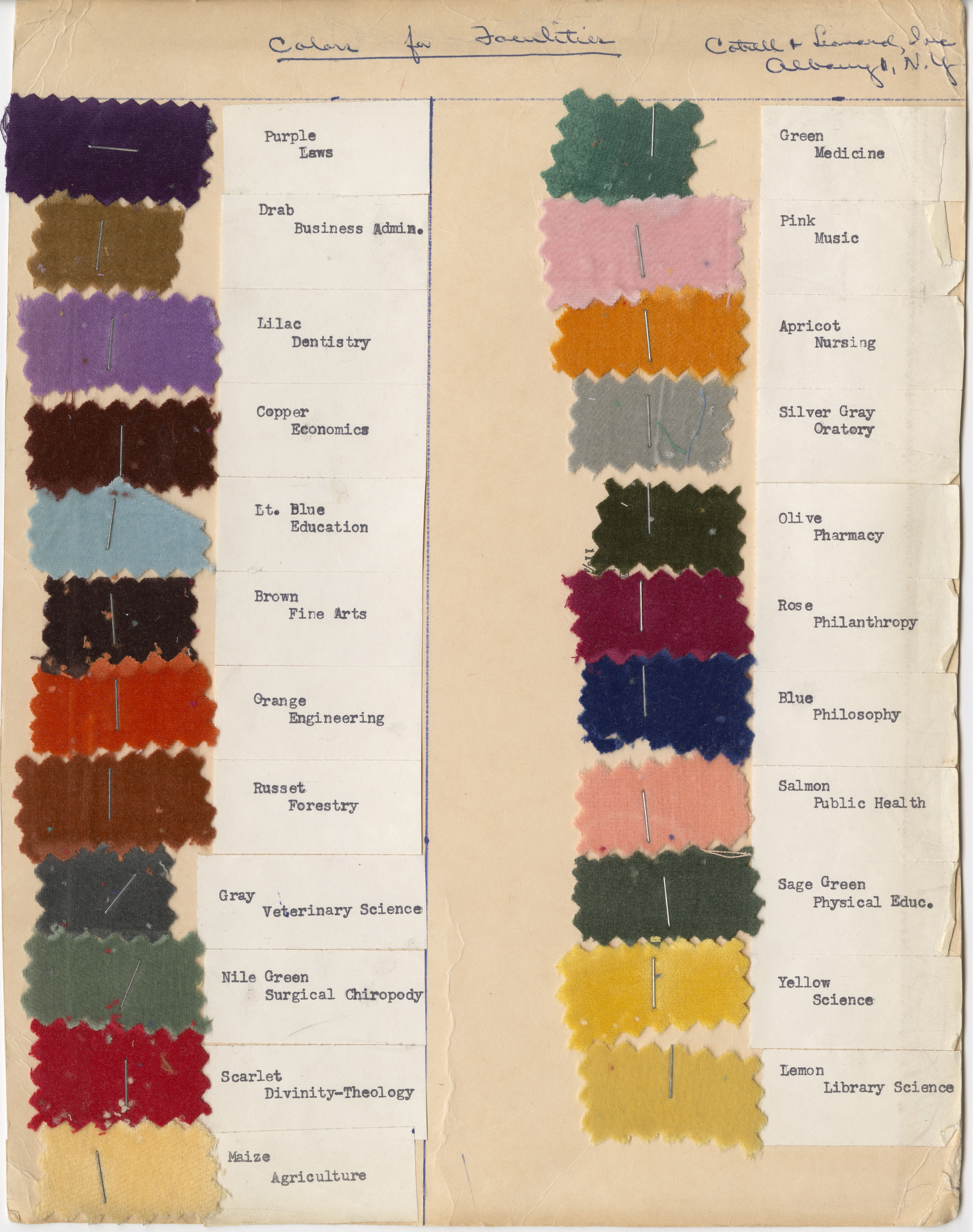The Cotrell & Leonard firm sent this collection of velvet swatches to Columbia University in 1936 or 1937, when Columbia considered a proposal to use mortarboard tassels in Faculty colors. The chart illustrates most of the Faculty colors the Intercollegiate Bureau had approved at that time, but Arts and Letters (white) and Humanics (crimson) are not shown, and Social Work (citron) is absent, perhaps because the Bureau was in the process of approving it. By the end of the 1930s the Bureau’s list of official Faculty colors was longer than the list of official Faculty colors by the American Council on Education, having added Surgical Chiropody (Nile green), Nursing (apricot), Philanthropy (rose), and Social Work (citron).
One may note the confusing similarity between the shades of greens, yellows, oranges, and browns, making the precise identification of an individual’s degree difficult to discern when the color is seen by itself. The colors are also perhaps darker than one might expect; this was to avoid too great of a contrast between the black gown and the colored degree trim of the gown and hood.
It is not known why Cotrell & Leonard used a blue-green shade for Surgical Chiropody’s Nile green rather than the traditional bright yellow-green shade of Nile green. Nor is it known why the sage green of Physical Education is not the grayish shade of mint green that is typical of that color.
Photograph courtesy University Archives, Columbia University in the City of New York.
